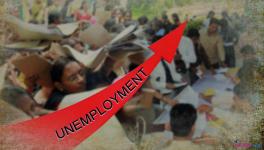What Will the Post-Coronavirus Global Economy Look Like?

Newspapers During 2020 Italy Lockdown
The coronavirus has now gone global, and economies are in freefall. The pandemic is clearly the precipitating cause of today’s crisis, but there’s an underlying disease that has been with us for a long time: neoliberal economics. Globalized travel and trade, multinational supply lines, offshoring and overly financialized economies that have prioritized banking interests, cartels and oligarchy above all else have made a large portion of our population highly vulnerable to the effects unleashed by this pandemic.
Policymakers have a tricky task ahead of them. The virus has created a supply shock, as businesses have shut down and workers have been told to stay at home. In response, demand is plunging as a result of the lost income and the corresponding collapse in sales. That’s highly deflationary (as the bond markets are now signaling). What is required is a robust fiscal response so that workers’ incomes are protected and have adequate financial resources to get health care.
At the same time, an environment in which work and production grinds to a halt for a prolonged period to mitigate the effects of the virus likely means that goods are not being produced or delivered. This creates the conditions for hyperinflation, if not accompanied by rationing or some form of price control. Hyperinflationary eras are relatively rare, but they can occur when countries continue to pay the workers in local currency despite limited production being possible, but nominal demand continues to rise relative to real output, which is now grinding to a halt. This is the real downside of mass lockdown, and self-quarantining, if those workers continue to receive fiscal support through the duration of the crisis (as they should). But absent fiscal support (or having it largely directed to society’s top tier as occurred after the 2008 crisis), you could get depression. Get the balance wrong, then, and civil unrest becomes a real possibility in either scenario. To paraphrase Barack Obama’s former Chief of Staff Rahm Emanuel, we can’t afford to let another serious crisis go to waste.
As one might have expected, the Trump administration has proved itself fully inadequate to the task at hand. Their proposed payroll tax cut is useless to someone who is an hourly earner and where there are no wages upon which to be taxed. A better policy for our circumstances is along the lines recently proposed by Jason Furman, former chairman of the Council of Economic Advisers during the Obama administration: “Congress should pass a simple one-time payment of $1,000 to every adult who is a U.S. citizen or a taxpaying U.S. resident, and $500 to every child who meets the same criteria.”
While it is good to see the Trump administration now considering some variant of the Furman proposal, it is obvious that a one-time payment isn’t going to cut it. We need to sustain income support so long as people are affected by this pandemic. Therefore, other measures should also include: 1) Moratoriums on mortgage and rental payments for the duration of the crisis (no interest rate penalties/no evictions). 2) Extensive relief for out of work employees (not just unemployment insurance). 3) An expansion of credit to small businesses to cover carrying costs so long as the economy remains in lockdown.
Likewise, the attempt at providing guaranteed sick leave to most American workers affected by the crisis so far falls dangerously short of furnishing anything close to universal paid sick leave. According to the New York Times, the Coronavirus Bill “guarantees sick leave only to about 20 percent of private-sector workers.” This comes on top of a decades-long crisis in the U.S. health care system, the world’s most expensive health care system that distributes care poorly and inequitably.
What’s most worrying about this bill is that the House Democrats caved on virtually every exemption insisted on by the White House and congressional Republicans, which should give voters a good sense of how a future Biden presidency would perform, given the presumptive Democratic presidential nominee’s long history of appeasing the GOP.
But the problems in the U.S. go well beyond the Trump administration, as the extent of the U.S. government’s long-term misplaced policy priorities is coming home to roost. The Centers for Disease Control (CDC), for example, have thoroughly screwed up the response, first and foremost by bungling testing for the coronavirus. With the same parochial hubris of American exceptionalism that has caused our medical and health care establishment to ignore results of pharmaceutical drug tests and clinical advances from abroad, the CDC rejected the already-developed Chinese and World Health Organization tests for coronavirus and insisted on unnecessarily inventing their own test kits—which turned out to be a dog’s breakfast that delayed our all-important mass testing program by several weeks. And, of course, the testing mess is continuing because the CDC made no advance provisions for turning on adequate emergency test lab capacity during this or any other epidemic crisis. The problems of the CDC are symptomatic of a broader problem in health care, in which a private sector oligopoly largely predicated on employment and income status, and prioritizing profits over adequate public provision, has proved itself wanting.
That said, the growing appreciation of the magnitude of the health crisis is now intersecting with the political dynamics of the 2020 presidential election. This has had the fortuitous result of producing additional fiscal expansion: the Trump administration has superseded its previous paltry paid leave proposal with a new $850 billion stimulus program (though still too reliant on “trickle-down” economics, as opposed to direct economic assistance to those most in need).
What about the rest of the world?
In Europe, the responses from the relevant authorities in Brussels and Frankfurt have exposed any pretensions about the EU acting like a cohesive political bloc. Bereft of a supranational currency, national governments have been reticent to undertake forceful fiscal policy actions absent the support of the sole currency-issuing entity, the European Central Bank (ECB), even as France and Spain have followed Italy by imposing widespread lockdowns and quarantines across each country (which will require a large fiscal stimulus to offset the likely economic impact). Here’s the other problem: Their economies have been shut down in response to the coronavirus, but the lockdowns themselves are a response to decades of austerity that have starved the health care systems of adequate resources to deal with the pandemic, thereby necessitating widespread quarantines to avert an even more serious breakdown of the system.
National borders, which since 2015 have been increasingly subject to “temporary” checks (despite the Schengen Agreement), are starting to look more permanent thanks to the virus. European solidarity is dissipating as all countries scramble to find national responses to the virus. There is no longer any pretense of having a coordinated EU-wide response. It’s every country for itself, as Professor Bill Mitchell notes, quoting a German ministry publication stating that the country’s “Federal Ministry for Economic Affairs and Energy published an order on 4 March 2020 in the Federal Gazette prohibiting the export of protective medical equipment (medical face masks, gloves, protective suits, etc.).” So much for “an ever closer European Union.”
Germany has also moved to seal off its borders to cope with the coronavirus, an ironic development from a government that had humanely granted asylum to 1 million refugees a mere five years ago. Next up, a reassessment of state aid and fiscal rules? Then perhaps repatriation of critical supply lines on national security grounds?
Meanwhile, the single-currency union is fraying at the edges, as credit spreads explode again. The euro may be in its death throes, as the new ECB president, Christine Lagarde, has proved herself unready for prime time. Her botched communication triggered a bond market sell-off on March 12 when she announced: “We are not here to close spreads, this is not the function or the mission of the ECB.” Although she subsequently apologized, the damage remains. Italy’s borrowing costs are likely to soar now that Lagarde has effectively repudiated the measures of her predecessor, Mario Draghi (whose “whatever it takes” speech was widely credited with calming the eurozone’s debt crisis in 2012, thereby substantially narrowing the cost of borrowing in the distressed Mediterranean economies).
It’s all well to call for a coordinated fiscal response, but the ECB president appears unable to recognize that the absence of explicit support from the eurozone’s sole currency issuer (along the lines proposed by Draghi) is precisely what constrains the ability of the national governments to undertake the kinds of robust coordinated actions that she rightly advocates. Absent that support, these countries are all exposed to solvency risk, and the vagaries of private portfolio preferences.
Suffice to say, COVID-19 might prove to be a major tipping point, as it accelerates a paradigm shift in terms of people’s attitudes toward the EU, the role of the state and public health, the need for monetary sovereignty, the madness of austerity, etc. Even the former chief economist of the historically austerity-oriented International Monetary Fund (IMF), Olivier Blanchard, has suggested incurring budget deficits of the magnitude of those sustained by the U.S. during World War II (which went as high as 26 percent of GDP). Truly, the age of austerity is behind us.
Likewise in the UK, Boris Johnson’s budget statement of March 11 outlined the most sustained fiscal loosening seen in that country since 1992. Yet even that is unlikely to be enough, given the rapid spread of the contagion and likely collapse of economic output (which is probably going to be closer to 4-6 percent of GDP, if the 2008 experience is anything to go by). As a result, UK Chancellor Rishi Sunak has followed up the budget with an announced £330 billion to support the economy during the coronavirus outbreak, including a system of loans and grants for companies; temporary tax relief for companies in the retail, hospitality and leisure sectors; and help for the airline industry. The Johnson government is also moving to “war footing,” urging British manufacturers to make the ventilators, masks, gloves, beds, and other items health care workers and others on the front line of the crisis need, according to the Sunday Times.
Wartime analogies have understandably been invoked to convey the magnitude of the crisis and corresponding need for massive, sustained government spending to support the life and health of the population and efforts to restructure manufacturing supply chains in ways reminiscent of war economies. This is more problematic today, given the extent to which excessive offshoring has exposed our inability to ensure consistent and safe supply of anything and decades of austerity that have undermined basic social services.
On the other hand, the wartime analogy only goes so far: human capital is at risk, but physical infrastructure is not being destroyed, as in wartime. And in wartime, economic activity continues flat out, as the requisite munitions are turned out to conduct military operations. Here, workers are being told to self-isolate, and stay at home, which means a lot is not being produced.
In many respects, it is better to think of the current situation as a global economy being in a state of suspended animation: Virtually all activity has been frozen as policymakers work to contain the spread of COVID-19 and the rest of us engage in social distancing and self-quarantine at home, the major byproduct of which has been the decimation global supply chains, along with of a host of service industries, notably travel and tourism, restaurants and retailers.
The other key distinction is that unlike war, there is a definitive endpoint, the glimpses of which are slowly becoming apparent. Although now spreading across the globe, the number of Chinese cases (the original source of the virus) have trickled to a halt since first being identified late last year; that might provide us with a lead indicator in terms of duration in the rest of the world, as we scramble to find a vaccine, and level off the exponential rise in cases outside of China. But in the meantime, the coronavirus is creating an unprecedented situation where possibly half of our workforce, or possibly more, may not be able to work. The impact on economic activity is comparatively that much larger. Absent a return to production at some point, our Western economies could come to resemble Venezuelan anarchy.
It is true that the monetary authorities have responded aggressively, by cutting rates and providing access to cheap credit, especially for small business enterprises hit badly by the crisis. The U.S. Federal Reserve, the Bank of Canada, Bank of England, Bank of Japan, ECB and Swiss National Bank have all cut rates and revived the U.S. dollar swap line arrangements, a development that helped to mitigate the dollar liquidity shortage in 2009. On the other hand, easing credit conditions can only help so much when one experiences a supply shock that induces a cessation of production.
The other challenge is that the coronavirus has vividly illustrated many of the hollow claims behind the “gig economy.” Many of its celebrated “freedoms” masked the precariousness of the independent contractors most heavily exposed to this economy, notably their reliance on consumer debt, paltry wages, and the absence of any employee benefits, such as health care. In the U.S., in particular, this subsector is large and getting larger, “over 31.5 million, constituting nearly 30% of all production and non-supervisory jobs,” according to Dan Alpert, an adjunct professor at Cornell Law School.
Equally disturbing is that much of the postindustrial workforce that is in the front line of dealing with the coronavirus pandemic (in sectors such as health and elder care) is likewise in low-wage, low-benefit, insecure jobs, which not only generates increasing vulnerabilities to demand, but also mitigates the capacity of the system to limit the spread of the virus (especially when the care workers are starved of the resources to protect themselves).
Enforced isolation only provides a brief palliative against the true costs of the fraying of our social safety net brought about by decades of attacks on the working and middle class and in the long-term risks civil unrest. Growth and production do matter. As much as we might laud the sudden switch to telecommuting and working online as one of the liberating aspects of the gig economy, it is manifestly unsuitable for manufacturing, where excessive disbursement and modularization can adversely impact the production processes (the recent travails of Boeing being a perfect illustration of this phenomenon).
It is similarly unclear whether our educational institutes can adequately provide comparable results when so much teaching and research and development depends on a community of interacting minds. On top of this, there are the long-term social implications. If this were to become the “new normal,” increased atomization and anomie will likely follow, and the loneliness and meaninglessness that feed suicide, mass shootings, and drug addiction could well risk becoming a new pandemic.
There is also a risk that this virus could actually delay the transition from “rentierism” to a “national developmentalism,” as I suspect all sorts of goodies will be passed on to the rentier class under cover of dealing with the coronavirus. That’s already happening: lots more quantitative easing has been announced, and bailouts are being rapidly targeted to industries adversely impacted, such as the airlines, but a lot less to help has gone to the people who work in those industries. Had today’s rapidly emerging depression-like economic state occurred because of another financial crisis a la 2008, it would have been less politically feasible to deploy the same policy matrix we used in 2008. So while it is laudable to see fiscal stimulus proposals growing in proportion to the growth of the pandemic, it is important to consider the distributional aspects of these stimulus measures in the months ahead. We must avoid a situation like the last crisis, where the vast bulk of the gains were quickly funneled to the top 1 percent with minimal political scrutiny, exacerbating the current situation we have today.
The inequality question will become even more germane in the U.S. if we get a Biden restoration of the status quo ante. Even as the coronavirus has exposed many longstanding weaknesses, notably our inability to make and distribute the things people need, the Democratic Party is still prone to deficit fetishism. Democrats are today being outflanked by the GOP, even its most right-wing members. Trump is finally responding to the belated recognition that his presidency is now imperiled by this crisis. But even if he loses, the indications suggest that a political reconfiguration could emerge first in the GOP, especially if it is ultimately led by a “New Deal Republican,” such as Josh Hawley or Marco Rubio. Meanwhile, the eurozone stands alone as it risks repeating the dreadful 1931 policies that exacerbated a global depression. As surprising as it might have seemed a mere six months ago, the optimal way forward might be provided by the United Kingdom if it continues in its goal of revitalizing the country via intelligent economic nationalism in which government-guided industrial policy is used to revive high-end industrial activity and redomicile a whole host of supply networks that generate highly skilled, well-paid jobs that benefit the many, as opposed to a limited number of economic rentiers. Post-Brexit, this is exactly what the UK will need, as it extricates itself from the ideological sterility of Thatcherism and the eurozone’s neoliberalism.
But the biggest takeaway from the crisis is that our societies must be immunized from the sickness of a diseased ideology that has done far more long-term damage to us than the current pandemic.
Marshall Auerback is a market analyst and commentator.
This article was produced by Economy for All, a project of the Independent Media Institute.
Get the latest reports & analysis with people's perspective on Protests, movements & deep analytical videos, discussions of the current affairs in your Telegram app. Subscribe to NewsClick's Telegram channel & get Real-Time updates on stories, as they get published on our website.
























